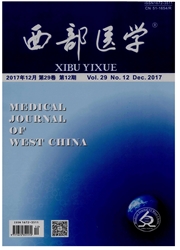

 中文摘要:
中文摘要:
自体免疫的胰腺炎(AIP ) 是导致机关机能障碍的突出的淋巴细胞渗入和胰腺的纤维变性描绘的胰腺炎的一种稀罕形式。AIP 的致病和病理仍然保持未知。人与胆汁管阻塞的症状和符号介绍了的 64 岁的中国人传播胰,提高的 IgG 层次,和否定自体免疫的抗体回答的头的增大。保存幽门的 pancreatoduodenectomy 被执行,一个胰腺的肿瘤被怀疑。然而, periductal lymphoplasmacytic 渗入和纤维变性在胰和附近的器官的头被发现而不是肿瘤细胞。在外科以后的四个月,因为严重黄疸的出现,病人被重新接纳并且支撑了腹的扩张。当 AIP 被怀疑,泼尼松 30 mg/d 口头上地被管理。1.5 个月以后,病人的症状消失了,并且血球素, aminotransferase 和 bilirubin 层次显著地减少了。在一个 9 瞬间后续时期上,泼尼松的剂量逐渐地被减少到 10 mg/d,病人留在好状况。我们进一步由 immunohistochemical 试金在胰腺的实质,十二指肠和胆囊墙表明了主导的 CD3+/CD8+ 人口, CD20+ 房间和一些 CD4+ 房间。这个 AIP 盒子在胰和额外胰腺的损害与重要 CD8+ T 淋巴细胞渗入介绍了,显示这张房间人口可能在调停是更重要的 AIP 致病与以前知道比并且那 AIP 可能是有异构的致病的糟糕定义的自体免疫的疾病。
 英文摘要:
英文摘要:
Autoimmune pancreatitis(AIP)is a rare form of pan-creatitis characterized by prominent lymphocyte inf iltration and pancreatic f ibrosis resulting in organ dysfunc-tion.The pathogenesis and pathology of AIP remain unknown.A 64-year-old Chinese man presented with symptoms and signs of bile duct obstruction diffuse enlargement of the head of pancreas,elevated IgG levels,and negative autoimmune antibody responses.A pylorus-preserving pancreatoduodenectomy was per-formed and a pancreatic tumor was suspected.Howev-er,periductal lymphoplasmacytic inf iltration and f ibrosis were found in the head of pancreas and nearby organs instead of tumor cells.Four months after surgery,the patient was readmitted because of reoccurrence ofsevere jaundice and sustained abdominal distension.Prednisone 30 mg/d was administered orally as an AIP was suspected.One and a half months later,the symp-toms of the patient disappeared,and globulin,amino-transferase and bilirubin levels decreased signif icantly.Over a 9-mo follow-up period,the dose of prednisone was gradually decreased to 10 mg/d and the patient remained in good condition.We further demonstrated dominant CD3+/CD8+ populations,CD20+ cells and a few CD4+ cells in the pancreatic parenchyma,duo-denum and gallbladder wall by immunohistochemical assay.This AIP case presented with signif icant CD8+ T lymphocyte inf iltration in the pancreas and extra-pan-creatic lesions,indicating that this cell population may be more important in mediating AIP pathogenesis than previously known and that AIP might be a poorly defined autoimmune disease with heterogeneous pathogenesis.
 同期刊论文项目
同期刊论文项目
 同项目期刊论文
同项目期刊论文
 期刊信息
期刊信息
